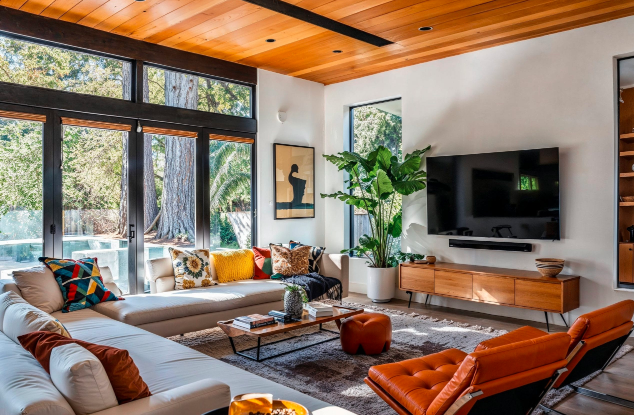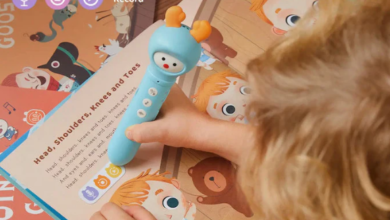How to Create a Stunning Mid-Century Modern Home with Sleek Design

A Mid-Century Modern home with a sleek design embodies timeless elegance, minimalism, and functionality. This architectural style, which emerged in the mid-20th century, is characterized by clean lines, organic forms, and a strong connection to nature. Designing a Mid-Century Modern home requires careful attention to detail, a blend of classic and contemporary elements, and a deep appreciation for simplicity and comfort.
Introduction to Mid-Century Modern Design
Mid-Century Modern design is more than just a style; it is a philosophy that embraces the idea that form should follow function. Rooted in the post-war era, this design movement prioritizes simplicity, open spaces, and an integration of the indoors with the outdoors. The essence of Mid-Century Modern design lies in its ability to create a harmonious and uncluttered living environment, where every element serves a purpose.
Incorporating Sleek Design Elements in a Mid-Century Modern Home
Sleek design in a Mid-Century Modern home focuses on creating a refined and polished aesthetic. This involves the use of streamlined furniture, minimalistic décor, and a neutral color palette. The sleek design also emphasizes the use of materials such as glass, metal, and wood, which contribute to the overall elegance and sophistication of the space.
The Role of Architecture in Mid-Century Modern Homes
Architecture plays a crucial role in defining a Mid-Century Modern home. The design often features flat planes, large windows, and open floor plans that allow for a seamless flow between indoor and outdoor spaces. The emphasis is on horizontal lines and low, sprawling forms that create a connection with the surrounding landscape. This architectural style promotes a sense of openness and freedom, making the home feel spacious and inviting.
Choosing the Right Furniture for a Mid-Century Modern Home
Furniture selection is key to achieving a Mid-Century Modern look. Opt for pieces that have clean lines, organic shapes, and a minimalist aesthetic. Mid-Century Modern furniture often features tapered legs, sleek profiles, and a focus on functionality. Iconic pieces, such as the Eames lounge chair or the Noguchi coffee table, can serve as focal points in the room, adding both style and comfort.
The Importance of Open Floor Plans in Mid-Century Modern Design
An open floor plan is a hallmark of Mid-Century Modern homes. This design element eliminates unnecessary walls and partitions, creating a sense of continuity and flow between different areas of the house. Open floor plans also allow for more natural light to fill the space, enhancing the home’s connection to the outdoors. In a Mid-Century Modern home, the kitchen, living room, and dining area often blend into one cohesive space, promoting a more casual and communal lifestylre
Read also: A Step-by-Step Guide to Buying Your First Home
Incorporating Natural Elements into a Mid-Century Modern Home
Nature is an integral part of Mid-Century Modern design. Large windows, sliding glass doors, and skylights are used to bring the outdoors in, creating a seamless transition between the interior and exterior spaces. Natural materials like wood, stone, and leather are often used in furniture and décor to enhance the organic feel of the home. Plants and greenery are also important in adding life and vibrancy to the space.
The Use of Color in Mid-Century Modern Design
While the Mid-Century Modern style is often associated with neutral color palettes, bold and vibrant colors can also be incorporated to add personality and interest to the space. Think of mustard yellows, burnt oranges, and deep blues that were popular in the mid-20th century. These colors can be introduced through accent walls, artwork, or textiles, creating a dynamic and lively environment while maintaining the overall sleek and modern aesthetic.
Lighting as a Key Element in a Mid-Century Modern Home
Lighting is a crucial element in any Mid-Century Modern home. The design often incorporates a mix of natural and artificial light to create a warm and inviting atmosphere. Pendant lights, floor lamps, and sconces with clean lines and simple shapes are commonly used to enhance the sleek design of the space. Additionally, statement lighting fixtures can serve as artistic focal points that elevate the overall aesthetic.
Creating a Seamless Indoor-Outdoor Connection
One of the defining characteristics of Mid-Century Modern homes is the strong connection between indoor and outdoor spaces. This is achieved through the use of large glass windows, sliding doors, and open spaces that allow for a continuous flow between the interior and exterior. Outdoor spaces are often designed as extensions of the indoor living areas, with patios, decks, and gardens that offer a place for relaxation and entertainment. The goal is to blur the lines between inside and outside, creating a harmonious and unified living environment.
Incorporating Iconic Mid-Century Modern Décor
Décor in a Mid-Century Modern home should be minimalistic yet impactful. Iconic décor pieces from the mid-20th century, such as sunburst clocks, abstract art, and sculptural vases, can add a touch of authenticity and nostalgia to the space. When selecting décor, it is important to focus on quality over quantity, choosing pieces that are both functional and aesthetically pleasing.
Maximizing Space in a Mid-Century Modern Home
Maximizing space is essential in Mid-Century Modern design. The use of built-in storage, multi-functional furniture, and open shelving can help keep the space organized and clutter-free. Mid-Century Modern homes often feature smart storage solutions that are seamlessly integrated into the design, allowing for a clean and streamlined look. The goal is to create a space that feels open and airy, even in smaller homes.
The Role of Textures in a Mid-Century Modern Home
Texture plays an important role in adding depth and interest to a Mid-Century Modern home. The use of natural materials such as wood, leather, and wool can introduce warmth and softness to the space. Textured fabrics like boucle, velvet, and tweed are also popular choices for upholstery and cushions. The key is to balance different textures to create a cohesive and harmonious look that complements the sleek design.
Sustainability in Mid-Century Modern Design
Sustainability is becoming increasingly important in modern design, and the principles of Mid-Century Modernism lend themselves well to eco-friendly practices. The emphasis on natural materials, open spaces, and minimalism aligns with sustainable living. Incorporating energy-efficient appliances, using reclaimed or responsibly sourced materials, and designing for longevity are all ways to create a Mid-Century Modern home that is both stylish and environmentally conscious.
Customizing a Mid-Century Modern Home to Reflect Personal Style
While Mid-Century Modern design has certain defining characteristics, it is also a style that can be personalized to reflect individual tastes and preferences. Whether you prefer a more traditional interpretation or a modern twist on the style, there are countless ways to customize your home. Mixing vintage pieces with contemporary furniture, experimenting with different color palettes, or incorporating unique artwork and accessories are all ways to make the style your own.
The Influence of Mid-Century Modern Design on Contemporary Architecture
Mid-Century Modern design continues to influence contemporary architecture and interior design. Its principles of simplicity, functionality, and connection to nature resonate with modern sensibilities, making it a timeless and enduring style. Many of the elements of Mid-Century Modernism, such as open floor plans, large windows, and a focus on natural materials, can be seen in today’s architectural trends.
Renovating an Existing Home with Mid-Century Modern Design
Renovating an existing home to incorporate Mid-Century Modern design can be a rewarding project. This may involve opening up spaces, adding large windows, or incorporating iconic Mid-Century furniture and décor. The goal is to enhance the home’s original character while introducing modern updates that align with the sleek and functional aesthetic of Mid-Century Modernism.
The Future of Mid-Century Modern Design
As we look to the future, Mid-Century Modern design shows no signs of fading. Its emphasis on simplicity, functionality, and a connection to nature continues to resonate with homeowners and designers alike. The adaptability of this style allows it to evolve with changing trends while maintaining its core principles. The future of Mid-Century Modern design lies in its ability to balance tradition with innovation, creating homes that are both timeless and contemporary.
The Impact of Mid-Century Modern Design on Popular Culture
Mid-Century Modern design has had a significant impact on popular culture, influencing everything from fashion to film. Its clean lines, organic forms, and emphasis on functionality have become synonymous with modern living. This design style has been celebrated in television shows like “Mad Men,” and its influence can be seen in the resurgence of interest in vintage furniture and décor. The cultural impact of Mid-Century Modern design is a testament to its enduring appeal and relevance.
The Benefits of Mid-Century Modern Design for Contemporary Living
Living in a Mid-Century Modern home offers numerous benefits. The open floor plans, large windows, and connection to nature create a bright and airy living environment that promotes well-being. The emphasis on functionality and simplicity makes it easy to maintain and enjoy, while the timeless aesthetic ensures that the home will remain stylish for years to come. A Mid-Century Modern home with sleek design is not just a place to live; it is a lifestyle that embraces the best of both past and present.
FAQs
What are the key characteristics of a Mid-Century Modern home?
Mid-Century Modern homes are characterized by their clean lines, open floor plans, large windows, and integration with nature. The use of natural materials and a focus on functionality are also key elements of this design style.
How can I incorporate Mid-Century Modern design into my home?
To incorporate Mid-Century Modern design, focus on minimalistic décor, sleek furniture with clean lines, and a neutral color palette. Incorporating natural elements and open spaces will also help achieve this look.
What type of furniture is best for a Mid-Century Modern home?
Furniture with clean lines, organic shapes, and a minimalist aesthetic is ideal for a Mid-Century Modern home. Iconic pieces like the Eames lounge chair or a Noguchi coffee table can serve as focal points.
How important is lighting in a Mid-Century Modern home?
Lighting is crucial in a Mid-Century Modern home. It should be a mix of natural and artificial light, with pendant lights, floor lamps, and sconces that have clean lines and simple shapes enhancing the sleek design.
Can a Mid-Century Modern home be sustainable?
Yes, Mid-Century Modern homes can be designed with sustainability in mind. The use of natural materials, energy-efficient appliances, and a focus on longevity align with eco-friendly practices.
What is the future of Mid-Century Modern design?
The future of Mid-Century Modern design lies in its adaptability. As trends evolve, this style will continue to balance tradition with innovation, making it a timeless choice for contemporary living.
Conclusion
A Mid-Century Modern home with sleek design is more than just an aesthetic choice; it is a reflection of a lifestyle that values simplicity, functionality, and a deep connection to nature. By carefully selecting the right architectural elements, furniture, and décor, you can create a living space that is both timeless and contemporary, offering comfort, style, and a sense of harmony with the world around you.





